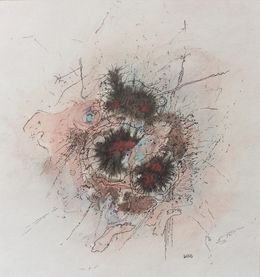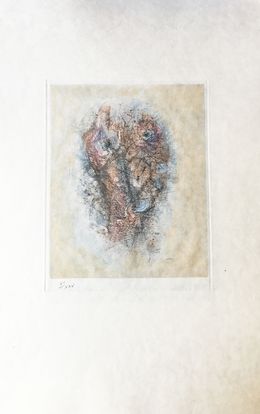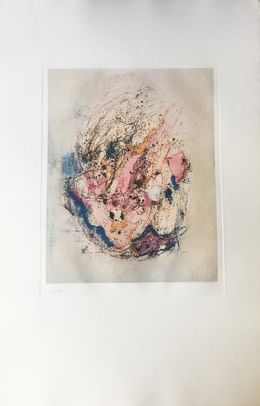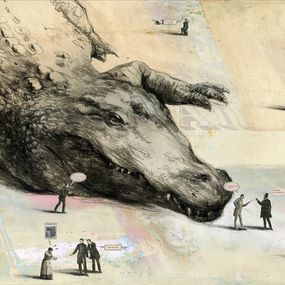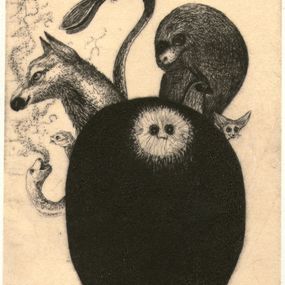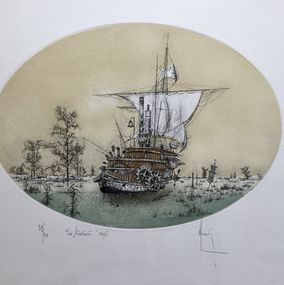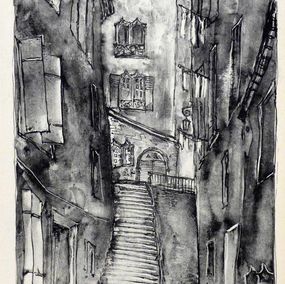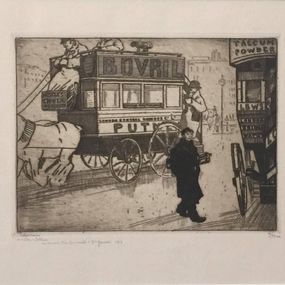
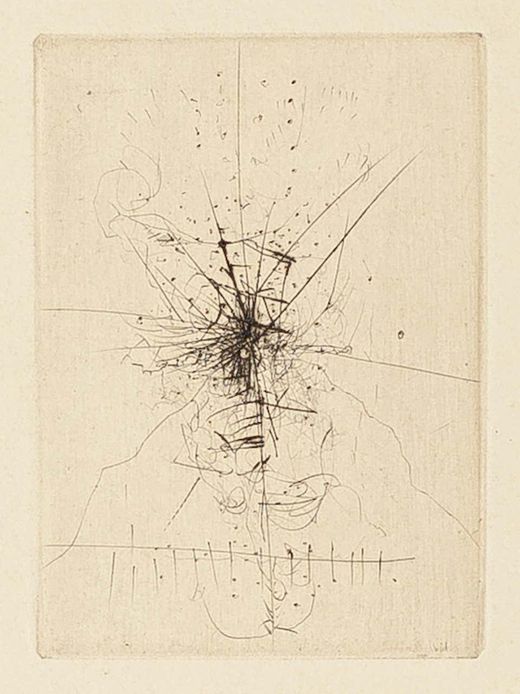
Germany
• 1913
Biography
Alfred Otto Wolfgang Schulze, or Otto Wols, was born on May 27, 1913 in Berlin. In 1930, Alfred Otto Wolfgang left school to receive a private education.
On July 14, 1932 Alfred Otto Wolfgang traveled to Paris, where he met Hans Arp, Alexander Calder, Alberto Giacometti, and many other personalities of the Paris theatre, literature, and art scene. Otto Wols decided to definitively leave Germany in favor of Paris. Without papers, he was considered stateless and a deserter, a situation that led to arrests by the police on a number of occasions.
In 1936 with the help of Fernand Léger and Georges-Henri Rivière, he was given a limited license to stay in France under the obligation of a monthly notification to the Paris police. Again without a work permit, Schulze earned his living with photography. In 1937, his work was exhibited for the first time publically in a photo gallery named Galerie de la Pléiade.
With the outbreak of the Second World War, Wols along with many other Germans was imprisoned as an “enemy foreigner” held within different French internment camps. During his internment are born a multitude of surrealist drawings and watercolors.
In 1945, his watercolors were exhibited for the first time – and against his will – at the Galerie René Drouin. He becames friends with Jean-Paul Sartre, who would sustain the artist amid his considerable financial and psychological difficulties. Alongside his illustrations to texts of the writers Jean Paulhan, Jean-Paul Sartre, Franz Kafka and Antonin Artaud, an independent graphic work is born.
Otto Wols died in 1951 in Paris.
Read more
On July 14, 1932 Alfred Otto Wolfgang traveled to Paris, where he met Hans Arp, Alexander Calder, Alberto Giacometti, and many other personalities of the Paris theatre, literature, and art scene. Otto Wols decided to definitively leave Germany in favor of Paris. Without papers, he was considered stateless and a deserter, a situation that led to arrests by the police on a number of occasions.
In 1936 with the help of Fernand Léger and Georges-Henri Rivière, he was given a limited license to stay in France under the obligation of a monthly notification to the Paris police. Again without a work permit, Schulze earned his living with photography. In 1937, his work was exhibited for the first time publically in a photo gallery named Galerie de la Pléiade.
With the outbreak of the Second World War, Wols along with many other Germans was imprisoned as an “enemy foreigner” held within different French internment camps. During his internment are born a multitude of surrealist drawings and watercolors.
In 1945, his watercolors were exhibited for the first time – and against his will – at the Galerie René Drouin. He becames friends with Jean-Paul Sartre, who would sustain the artist amid his considerable financial and psychological difficulties. Alongside his illustrations to texts of the writers Jean Paulhan, Jean-Paul Sartre, Franz Kafka and Antonin Artaud, an independent graphic work is born.
Otto Wols died in 1951 in Paris.
Nationality
Categories
Artistic movements
Themes
Discover the movements linked to Otto Wols
Discover similar artists
Discover our selections of works by artists
Need help finding your favorite? Consult our selection pages made for you.
Need to know more?
What are their 3 main works?
What is Otto Wols’s artistic movement?
The artistic movements of the artists are: Detailed Somber Illustrations
When was Otto Wols born?
The year of birth of the artist is: 1913






